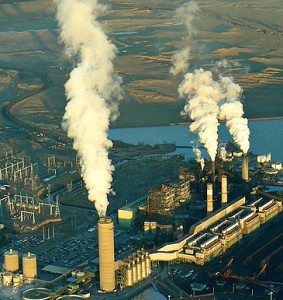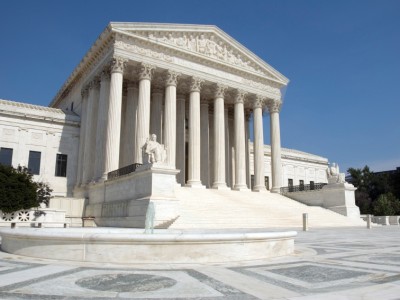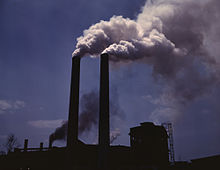air pollution
Interpreting Michigan v. EPA
The opinion seems likely to have very limited repercussions.
In bringing the mercury rule to the Supreme Court, industry was hoping for a ruling that EPA had to balance costs and benefits (and could only include benefits relating to mercury). What they got was far less than that. Here, I’d like to address some key questions about the opinion. 1. When does EPA have …
Continue reading “Interpreting Michigan v. EPA”
CONTINUE READINGMercury Rising: The Court Reverses EPA’s Regulation
This was not a great decision for EPA, but it could have been much worse.
The Court has just now decided the Michigan case, involving EPA’s mercury regulation. As Ann Carlson explained in an earlier post, a lot was at stake in the case. The Court ruled 5-4 against EPA. This passage seems to be key to the Court’s reasoning: One would not say that it is even rational, never mind …
Continue reading “Mercury Rising: The Court Reverses EPA’s Regulation”
CONTINUE READINGOn China’s Remarkable Viral Air Pollution Video
Can 200 million viewers (and counting) be wrong?
Last Saturday evening, my research assistant (a wonderful JD student raised and educated in China) sent me a message: “This is a link to a documentary directed by Chai Jing (柴静). It has raised public concern about air pollution.” In perhaps the understatement of the year, she added: “Many Chinese people have been watching it.” …
Continue reading “On China’s Remarkable Viral Air Pollution Video”
CONTINUE READINGKiller Coal
Black lung has been the underlying or contributing cause of death for more than 75,000 coal miners since 1968, according to NIOSH, the federal agency responsible for conducting research on work-related diseases and injuries. Since 1970, the Department of Labor has paid over $44 billion in benefits to miners totally disabled by respiratory diseases (or …
Continue reading “Killer Coal”
CONTINUE READINGJustice Scalia’s Puzzling Dissent
Justice Scalia’s dissent in EME Homer contains a number of unusual lapses in substance and tone.
As I’ve been studying the opinions in EME Homer, I’m increasingly struck by the oddities of Justice Scalia’s dissent. There was a flap last week about his blunder, later quietly corrected, in describing one of his own past opinions. But that’s not the only peculiarity of the dissent. As a quick reminder, EME Homer involved EPA’s effort to deal with interstate …
Continue reading “Justice Scalia’s Puzzling Dissent”
CONTINUE READINGA Victory for Clean Air
The D.C. Circuit has upheld EPA’s regulation of mercury from coal-fired plants. We can all breath easier as a result.
EPA won an important victory in the D.C. Circuit today. In White Stallion Energy Center v. EPA, the court upheld EPA’s new regulations limiting mercury from coal-fired power plants. The main issue in the case was about a threshold requirement for regulation. Before setting limits on mercury from coal plants, EPA had to consider studies of …
Continue reading “A Victory for Clean Air”
CONTINUE READINGKing Coal’s Fading Grip
According to a new study from Duke, coal may be on the way out. as “[l]ow natural gas prices and stricter, federal emission regulations are promoting a shift away from coal power plants and toward natural gas plants as the lowest-cost means of generating electricity in the United States.” The authors estimate that “the economic …
Continue reading “King Coal’s Fading Grip”
CONTINUE READINGGina McCarthy to be nominated as EPA head
As predicted by Cara recently in this space, it’s being widely reported (for example here) this morning that Gina McCarthy, currently EPA’s Assistant Administrator for the Office of Air and Radiation, is Obama’s pick to succeed Lisa Jackson as EPA Administrator. Cara sees this appointment as a good thing for EPA’s climate policy efforts and …
Continue reading “Gina McCarthy to be nominated as EPA head”
CONTINUE READINGDeadly spike in Beijing’s air pollution
This graph shows recent air quality monitoring data (PM 2.5) from the U.S. Embassy in Beijing. As the New York Times noted, this spike—seen as a thick haze in the city—has been described as “postapocalyptic.” Thanks in no small part to the Clean Air Act, we have thus far avoided the need to walk around …
Continue reading “Deadly spike in Beijing’s air pollution”
CONTINUE READINGThe D.C. Circuit’s Activist Ruling on Interstate Pollution
About ten days ago, the D.C. Circuit struck down EPA’s effort to establish a cap-and-trade system for pollutants that cross state lines. Now that I’ve had a chance to read the lengthy opinion in EMR Homer City Generation v. EPA, I’m struck by the aggressiveness of the court’s intervention, which goes well beyond the customary …
Continue reading “The D.C. Circuit’s Activist Ruling on Interstate Pollution”
CONTINUE READING








